May 29, 2020 / Nirav Shah
Do you want to optimize your AWS compute billing? If so continue reading. In this blog, we will walk you through one of the best AWS services called Compute Optimizer, a service that was introduced in late 2019.
AWS Compute Optimizer is a service which helps the users and organizations to reduce their compute cost and optimize the performance of EC2 machines by using machine learning to analyze historical compute utilization metrics and suggest the best EC2 instance types and various other related configurations.
Now here are some of the Benefits of Compute Optimizer
Currently, there are some Limitations: AWS’s resources do not have recommendations until they have been running for at least 30 hours.
AWS Compute Optimizer is available in US East (N. Virginia and Ohio), US West (Oregon and N. California), South America (São Paulo), Asia Pacific (Mumbai, Seoul, Singapore, Sydney, and Tokyo), Canada (Central), and Europe (Ireland, Frankfurt, London, and Stockholm), and supports the M, C, R, T and X instance families.
Step 1: Sign into AWS Management Console and get to Compute Optimizer
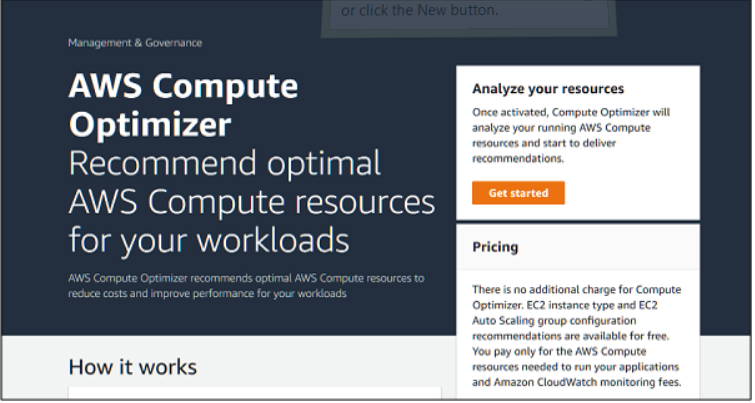
Step 2: Click on Opt-in for using the service as it will create a read-only service-role which will redirect you to Dashboard.
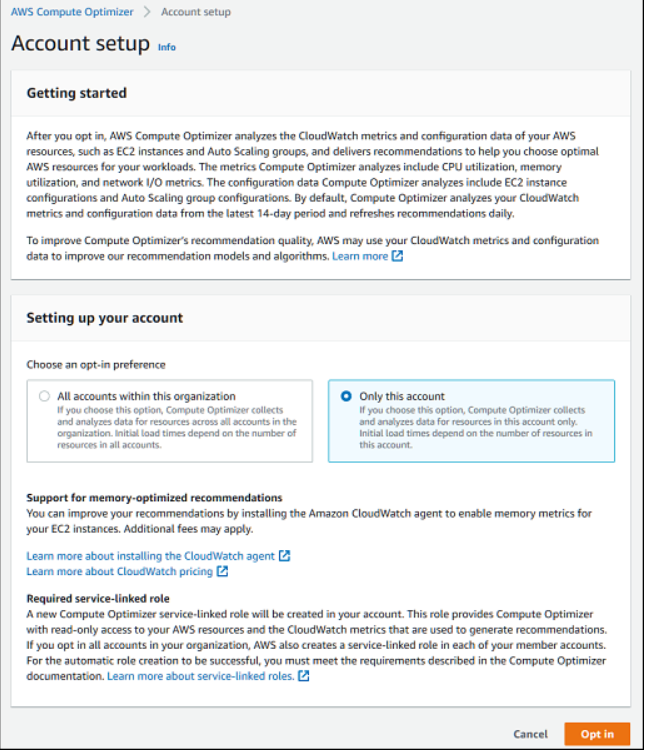
Step 3: It may take time to scan the information of running EC2 in AWS Infrastructure.
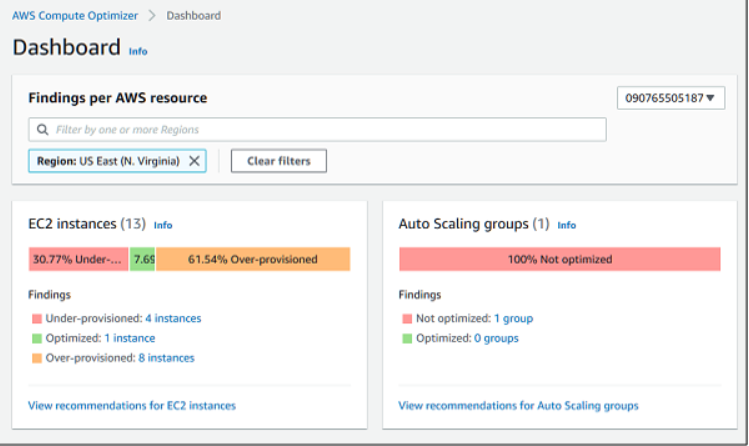
Step 4: View recommendation based on instances types
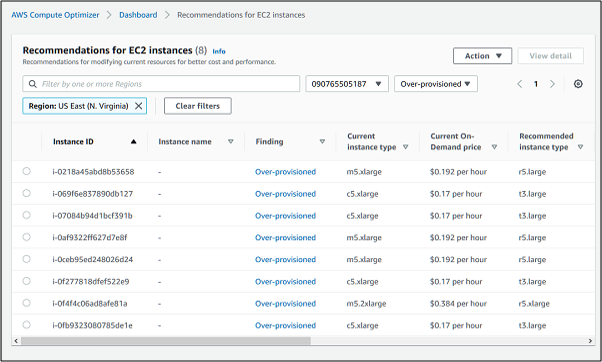
Step 5: Compare and control the over-provisioned and under-provisioned resources with the metrics provided
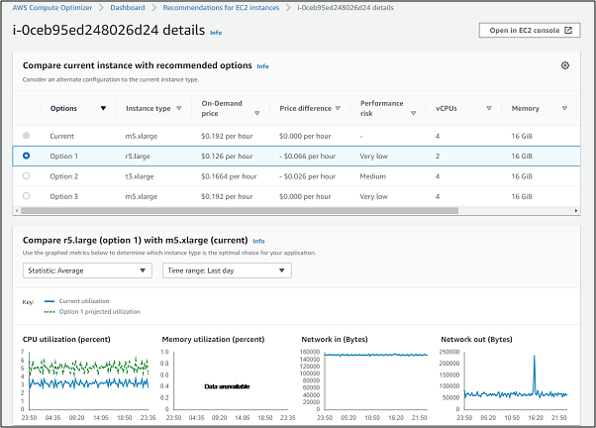
You see there are basically three stages in AWS compute optimizer, so let understand these three stages step by step.
Under-provisioned – An EC2 instance is considered under-provisioned when at least one specification of your instance, such as CPU, memory, or network, does not meet the performance requirements of your workload. Under-provisioned EC2 instances might lead to poor application performance.
Over-provisioned – An EC2 instance is considered over-provisioned when at least one specification of your instance, such as CPU, memory, or network, can be sized down while still meeting the performance requirements of your workload, and when no specification is under-provisioned. Overprovisioned EC2 instances might lead to unnecessary infrastructure cost
Optimized – An EC2 instance is considered optimized when all specifications of your instance, such as CPU, memory, and network, meet the performance requirements of your workload, and the instance is not over-provisioned. An optimized EC2 instance runs your workloads with optimal performance and infrastructure cost. For optimized resources, Compute Optimizer might sometimes recommend a new generation instance type.
To know more please visit below URL:
https://docs.aws.amazon.com/compute-optimizer/latest/ug/compute-optimizer.pdf
Also Read: Serverless compute on AWS: AWS Lambda
Related Post: The Best AWS Tools for Cost Optimization and Reporting
Services: Hire AWS Expert
As a Director of Eternal Web Private Ltd an AWS consulting partner company, Nirav is responsible for its operations. AWS, cloud-computing and digital transformation are some of his favorite topics to talk about. His key focus is to help enterprises adopt technology, to solve their business problem with the right cloud solutions.
Have queries about your project idea or concept? Please drop in your project details to discuss with our AWS Global Cloud Infrastructure service specialists and consultants.